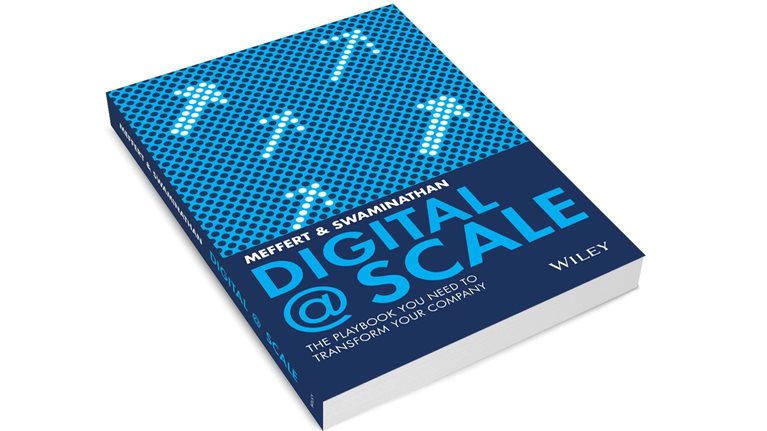A digital transformation is an ambitious undertaking. To make it work at scale, companies need discipline, planning, and committed top-down leadership. In this wide-ranging interview with McKinsey’s Martin Hattrup-Silberberg, Jürgen Meffert, co-author of Digital @ Scale: The Playbook You Need to Transform Your Company, outlines the challenges—and rewards—of doing it right.
The top challenges enterprises face while undergoing a digital transformation
The first issue is clarity. What does digital mean for you in your industry and for your company specifically? The second is urgency. And that’s a difficult one for many to understand if a company is still performing well. Why should they change? The third is planning. What’s an appropriate plan to do this at scale? Fourth, and this is probably my most important one, is recognition of your current company setup and how to change it to adapt to the new environment. This includes talent management.
Stay current on your favorite topics
Traps to avoid
The main trap CEOs fall into is not understanding digital correctly. This isn’t an IT problem; it’s a real business problem. Very often you see people focusing on additional efficiency changes and improvements to their company rather than on understanding what type of new business models and business opportunities are possible in the ecosystem.
Another trap is thinking they can do a little digital venture on the side and reinvent the business with it.
A framework for transforming at scale
If you want to transform at scale, I recommend following a very simple framework. Start with the “why” question. The why question is geared toward creating a sense of urgency.
There are always two ways to go with this. Creating a sense of urgency because your business is starting to suffer is the easy way. The other way is to get inspirational.
Then you take people on a ride. You go to Silicon Valley. You go to Israel. You go to Berlin and get ideas, get inspiration from start-ups, from technology companies that are at the leading edge.
Then there is the question of what. What is the program? What is the program at scale? How long will it take? First, recognize this is a three- to five-year transformation that is massive, and if you do it right, it’s going to permeate the whole company.
What is changing? What kind of new opportunities are emerging? What type of business models are emerging and might bring additional value? And who’s attacking you, possibly with new technologies, and is about to destroy or at least challenge your business model?
Addressing those “what” questions naturally leads to a systematic understanding of how digital works with your current business model, end to end. When we talk about commercial sectors, we talk about omnichannel and pricing, but it’s really about the total customer experience. From there we have innovation generally and product/service innovation specifically. Doing that requires design thinking, and starting with understanding customer pain points rather than only with a technical idea. Finally, there’s the supply chain. Have we used all the means and capabilities to get what the customer wants, not only in terms of cost, but also in terms of response time?
Would you like to learn more about our Digital McKinsey Practice?
Then you need to think about foundations that support the business. There are technical foundations, and at the end, that’s about IT. It’s security and two-speed architecture. How can I, in fact, become agile? It’s all about organization. Do I have the talent? Do I have agile process capabilities?
Finally, there’s the “how” question: how do I do it? This is where the core of the matter lies, and it starts with creating a pilot that’s meaningful and has a high probability of success, as well as with recognizing that it’s all about the customer. It’s an end-to-end view. And it’s about recognizing that we must break the functional silos, and that there’s even a value attached to doing that. Then, you need some tooling.
You need to have KPIs. You need to have completely new budgeting processes, not the annual budget process, one that’s milestone-based. You need to have talent and decision boards that are very different from the traditional ones. Once you’ve completed a successful pilot and you’ve put the tool set and the governance in place, it’s all about scaling. Scaling must touch the whole organization.
The importance of speed
Traditional market research fails, because it’s like asking the blind what color they prefer. If your customer doesn’t know what he/she wants, and if your product management doesn’t exactly know how the next-generation product should look, it’s all about minimal viable product. It’s all about concept iteration, and therefore it’s about speed.
So you go out, you get customer feedback, you change the proposition. You do it again, you get the feedback, and you change the proposition. That’s a very, very counterintuitive mind-set, particularly since we are coming from a world where we had long planning, we had stability, and it was of utmost importance to get things right the first time, to avoid waste. Here, we need a very different mind-set, a trial-and-error mind-set, and speed matters.
Speed beats synergy. Go for the speed, go for the experience. The whole idea of synergies will come once you have embedded and instilled this new culture.
Creating a scaling toolkit
Companies are usually in one of three stages: experienced in digital, starting to experiment, or limited exposure.
Let’s focus on the last two. A couple of tools stand out. One is around what structural changes you make to the company. You could start rolling through end-to-end processes one by one. That works well for banks and telecoms. It might not work as well in other settings. In those settings, you might opt to use one unit as a lab to experiment with new technologies. And then you need a different budgeting process as mentioned earlier: allocations based on reaching certain milestones. Another important tool is around measurement. You need the appropriate KPIs. It might not be order entry or revenue. It might be number of clicks, or conversion rate. It might be something around operational indicators, such as when customers start to accept your value proposition.
Finally, you need to add a capability known as scrum. This is about being very fast and agile. It’s about installing different people, different talents. And you need to anchor them in the organization in a way that they have the degree of freedom they need and are still aware of all the queries and the data manipulation in the data set from legacy IT.
The role of the CEO
The CEO has a preeminent role in driving the digital-transformation process. The process needs to start from the top. You need to change structures. The only one who can do it is the CEO. She needs to embrace the topic and make it a priority. She needs to consistently communicate to the organization. She needs to act decisively. She needs to empower people who help drive the transformation. She needs to also sideline people who are in the way. And I think one very important point: there is no return ticket, and this is what a CEO needs to radiate. She needs to radiate that it’s a marathon, not a sprint.

Digital @ Scale: The Playbook You Need to Transform Your Company
But it’s also important to act quickly. Look at the different industry segments in B2C. Digitization has happened and we have seen a lot of casualties. There are many companies that were leaders in their industry that don’t exist anymore. Everybody knows the names of these formerly famous companies.
In B2C we’re on the next S curve. In the whole financial sector, and insurance, we’re in the middle of large changes. Many people ask, “Why do you need this kind of big-budget organization to provide insurance services?” In B2B, it’s about how can I leverage my assets more, and how can I tailor my products particularly to be industry leading? What these have in common is an incredible speed of change, and that speed of change is accelerating. If you wait, if you don’t act now, it might be too late a year from now. It will definitely be too late two years from now, and you might not have a right to play three years from now. Executives need to recognize that change is accelerating exponentially.
For another view on making change happen with Digital @ Scale, see "Harnessing scale to drive successful digital transformations."


